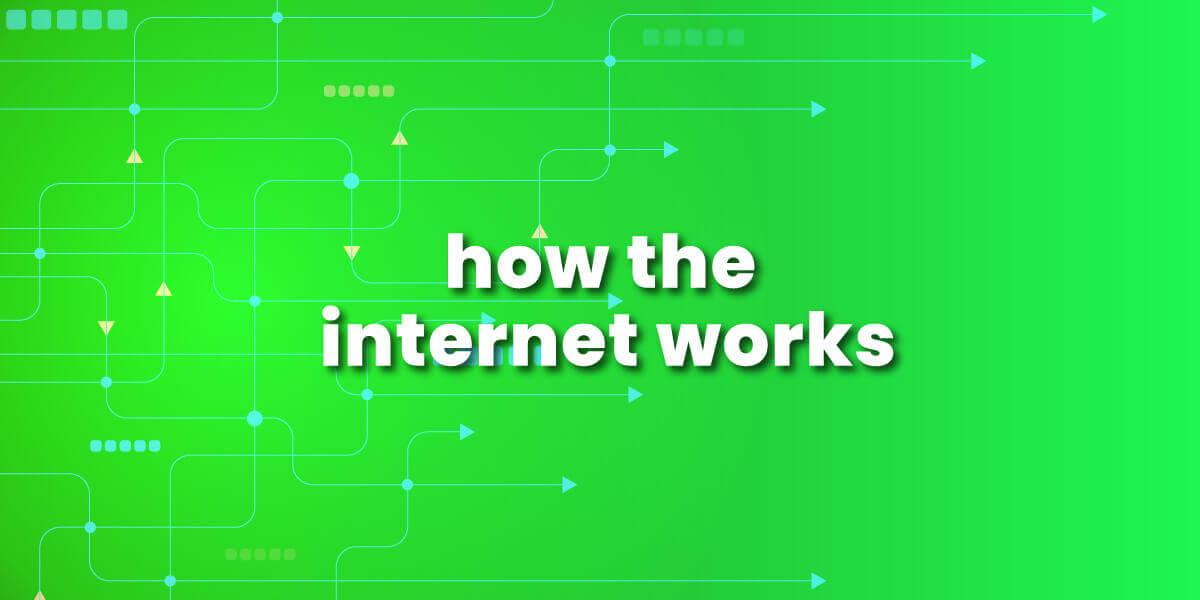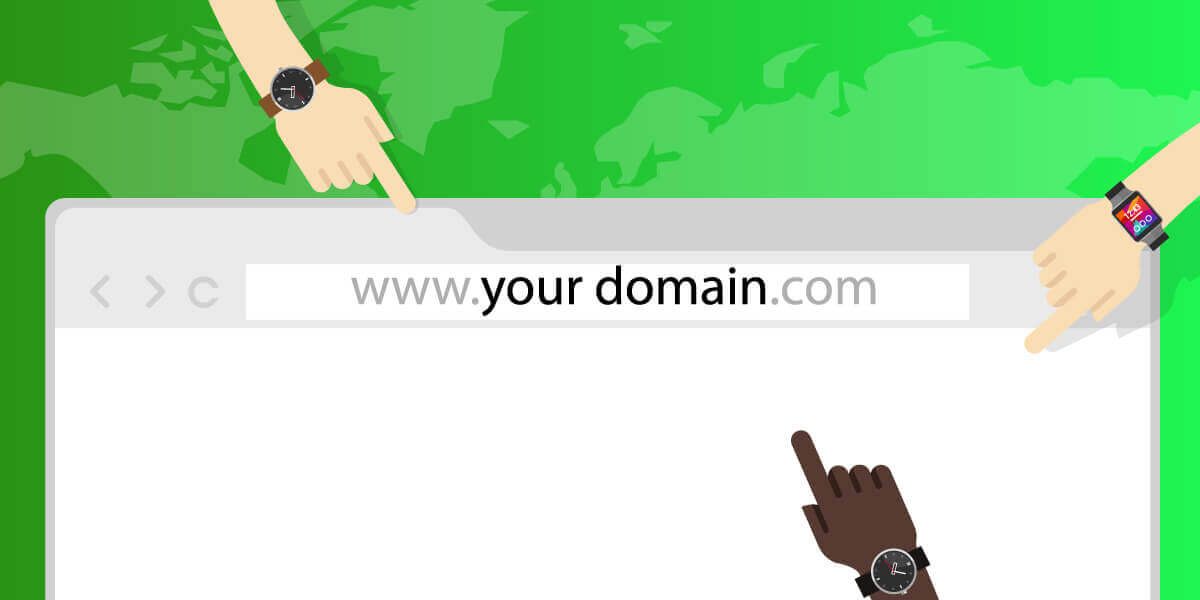Understanding Internet Connectivity: Packets and Protocols

Table of Contents
We all depend on the internet every day to help us connect with other people. But how exactly does the internet work to link together billions of devices? How do we get this massive flow of information across the globe? In this beginner’s guide, we’ll explore the basic building blocks that make the internet work.
The internet uses a whole alphabet soup of terms you’ve probably heard before: IP, TCP, DNS, ISP, SSL, HTTPS. Some of them may be obvious to you, while others take a little more explanation. Decoding just a handful of letters can teach you the basics that lead to understanding internet connectivity.
An Internet Connection: Portal to Opportunity
Having access to the internet has become a basic necessity that everyone needs to succeed. We need an internet connection to search for information, take online classes, work remotely, access government services, and much more. Understanding the behind-the-scenes technology that supports connectivity is important. Knowing just a few facts helps you work with your devices and troubleshoot digital networking.
This article will provide an overview of the core technologies. We’ll explore how data gets broken into packets and routed to destinations with IP addresses. That data then gets reassembled reliably using TCP, and DNS maps domain names to IP addresses. You’ll also learn about internet service providers, types of internet connections, and encryption protocols that keep your data secure.

Understanding Packets
All data transmitted over the internet gets broken down into small chunks called packets. A packet contains a piece of the data being sent, as well as information about where it came from, where it’s going, and how to reassemble it. Breaking data into packets makes transferring it faster and more efficient.
Packets are sent out individually and can take different paths to their destination. Once all packets are received, they are reassembled with sequence information added to the original data.
If packets are lost or corrupted during transmission, they can easily be re-sent without a user needing to retransmit everything.
The size of packets can affect network congestion and efficiency. If packets are too big, delays cause problems. If they’re too small, the overhead makes transmission slower.
Internet Protocol (IP): The Foundation of an IP Address
The core protocol that allows devices to route packets over the internet is the Internet Protocol, commonly referred to as just IP. IP provides addressing rules that allow packets to reach their destination.
Every device connected to the internet is assigned a unique numerical IP address. The current standard is IPv4, which uses 32-bit addresses providing over 4 billion unique possibilities. Because those 32-bit addresses are running out, IPv6 uses 128-bit addresses for exponential growth.
IP addresses work like postal addresses, telling packets where to go. They get assigned in blocks to Internet Service Providers (ISPs) which then assign individual addresses to customer devices.
There are also public IP addresses for entities outside local networks. Special IP addresses are reserved for private networks or multicast traffic.

Transmission Control Protocol (TCP): “Three-Way Handshake”
While IP handles core addressing and routing, Transmission Control Protocol (TCP) builds reliability and congestion control on top of IP.
TCP ensures complete accurate data transfer necessary for things like web browsing, email, or FTP.
TCP enables reliable two-way data transmission through something called a three-way handshake. This opens a temporary connection, verifies data integrity, resends lost data, and then closes the connection. TCP also has awareness of network conditions to adjust to congestion by modifying how it sends data.
Together, IP and TCP form the fundamental data delivery system of the internet.
Domain Name System (DNS): Names for Internet Sites
IP addresses work well for computers. But human internet users need more than a string of numbers to help them remember websites.
That’s why we have domain names like google.com or facebook.com. The Domain Name System (DNS) provides the translation from these domain names we type into browsers to the actual IP addresses needed for routing.
DNS servers maintain a directory that matches domain names to IPs. When you type a domain name into your browser, your device sends a DNS query to resolve the name into an IP address which can then be reached. DNS servers around the world maintain this shared directory system crucial for everyday internet use.

Internet Service Providers (ISPs)
Now we understand how data travels around the internet, but how do homes and businesses actually connect to the internet? That’s where internet service providers (ISPs) come in. ISPs are the companies that bridge the gap between individual internet users and the core internet backbone.
Popular residential ISPs like Brightspeed link homes and businesses to the internet infrastructure. ISPs have large-scale connections to internet exchange points. They then provide various connection options to subscribers: fiber, DSL, cable, satellite, 4G, dial-up and more. Business connections can also be supported by T1/T3 lines. Different types of connections have vastly different speeds and bandwidths.
ISPs provide the physical connectivity enabling customers to access the internet, web pages, and internet-based services. They are the gatekeepers to the global internet.
Once you select a provider, the provider will provide monthly internet service based on your internet plan.
Security and Encryption: SSL and HTTPS
Our internet activity also brings us potential risks like hacking, surveillance, identity theft, fraud, and more. Luckily internet infrastructure includes security measures and encryption designed to protect our data and privacy as it travels between networks.
Encryption protocols include Secure Socket Layer (SSL), Transport Layer Security (TLS), and Hypertext Transfer Protocol Secure (HTTPS). These protocols encode data so that only approved recipients can decode and read it. This protects sensitive information from being intercepted and accessed by bad actors.
Other security mechanisms provide authentication to confirm identities and prevent things like man-in-the-middle attacks. Nothing is 100% secure, but good protocols provide the vital security layers that make the internet safe to use for tasks like banking and shopping.

Six ABCs of Internet Connections
So, now we’ve been through all six of the common internet definitions that can help you understand internet connectivity.
IP, TCP, DNS, ISP, SSL, HTTPS are the foundation of how our connections work and stay safe and secure. And if you know what those letters mean, there’s also a good chance your team may win bar trivia some night!
Understanding foundations like packets, IP addressing, DNS, encryption, and internet service providers helps us troubleshoot the wired and wireless connections that hook the world together.
The internet is constantly evolving with new standards and innovations. But robust protocols and infrastructure ensure that everything keeps working together over your internet connection.
As our digital society increasingly moves many critical services online, a grasp of these basics is important for people of all ages and skill levels.
We hope this has given you a useful jumping-off point if you’re an everyday internet user seeking to peek under the hood of this technology. We often take internet access for granted, but just a little basic knowledge can really help you if things start to go off-course with your internet connection.

FAQs: Understanding Internet Connectivity
What is a protocol?
A protocol is a set of rules that define how devices communicate with each other over a network. Protocols allow different hardware and software to exchange information successfully. On the internet, protocols like IP, TCP, and HTTP standardize data transmission so all connected devices can understand each other. Following agreed-upon protocols is crucial for the interoperability that makes the internet work.
What is an IP address and what does it do?
An IP address is a unique numerical label assigned to each device connected to a network. IP addresses allow devices to communicate with each other over the internet. They function similarly to postal addresses, telling packets where to go so they reach the correct destination.
What is the difference between IPv4 and IPv6?
IPv4 uses 32-bit addresses providing over 4 billion unique addresses. However, because those addresses are running out, IPv6 was developed. It uses 128-bit addresses to provide exponentially more address possibilities to support future internet growth.
What is a packet and why are they used?
A packet is a small chunk of data transmitted over the internet. Breaking data into packets makes transferring it faster and more efficient. Packets can take different paths and be reassembled once they reach their destination. This provides flexibility if some packets are lost or corrupted.
What does a domain name system (DNS) do?
DNS provides the translation from domain names that humans understand (like google.com) to the numerical IP addresses that computers need to route traffic. DNS servers around the world maintain the directory mapping domain names to IPs so traffic gets sent to the right place.
